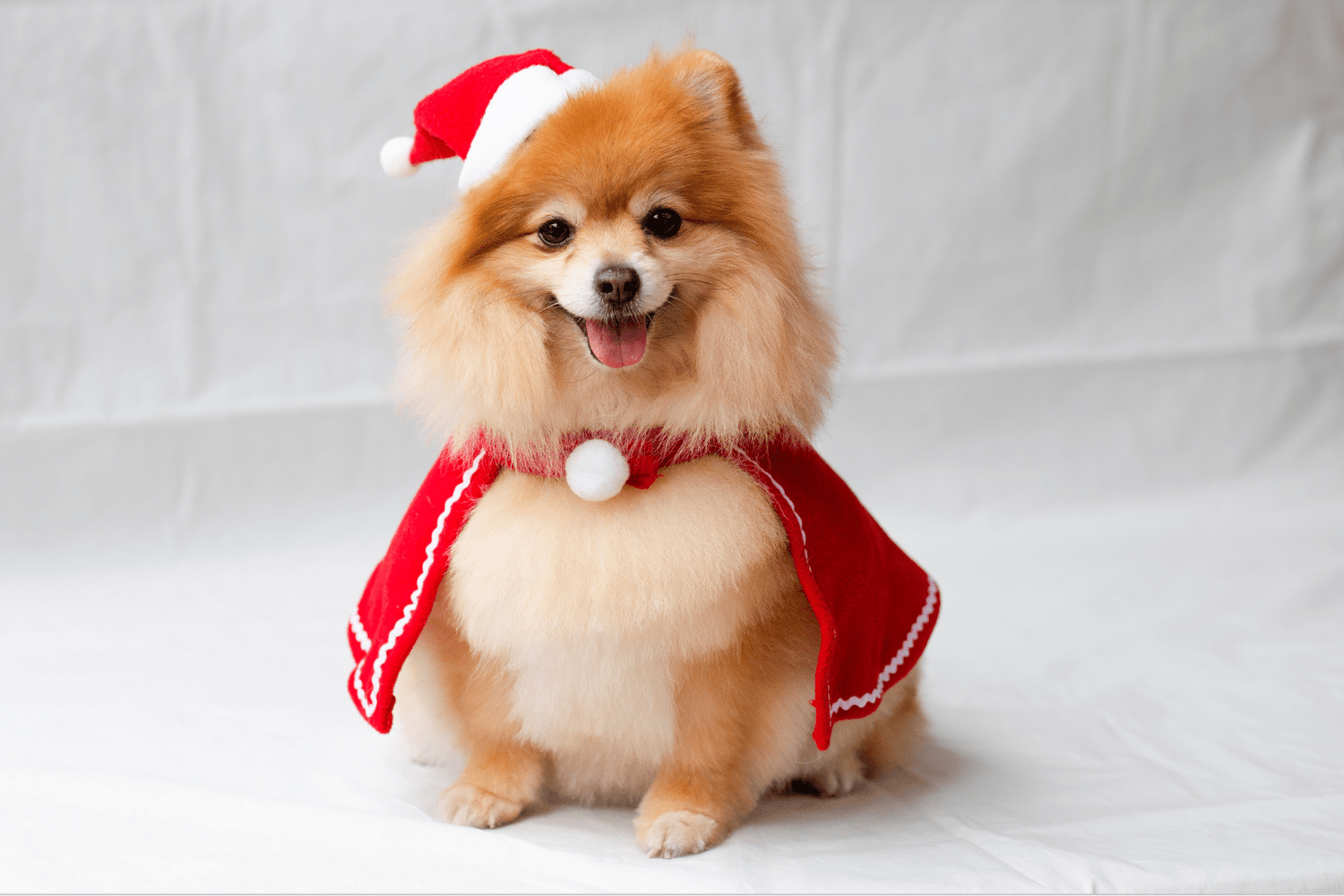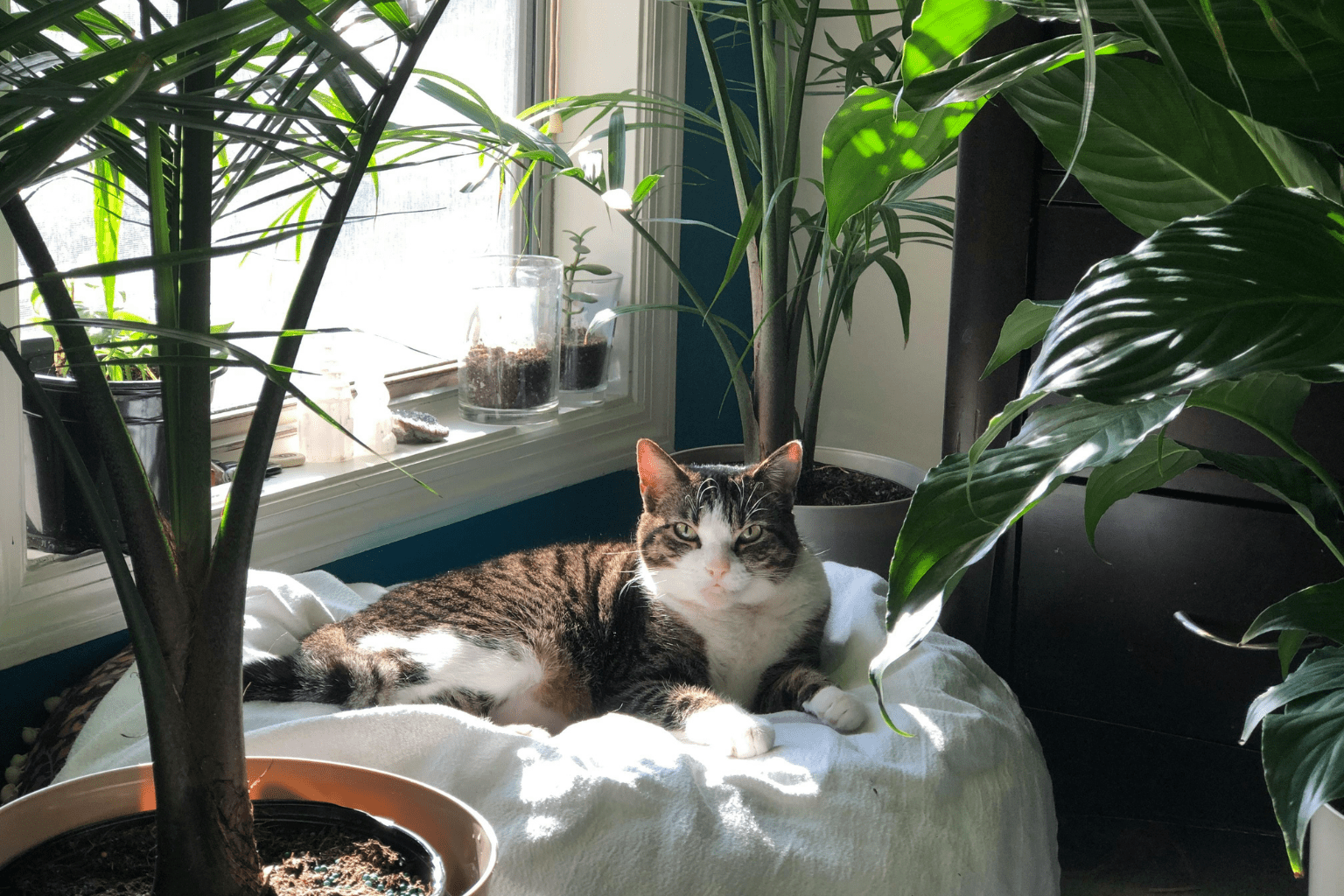Key Takeaways
- Dog eyelashes play a crucial role in protecting their eyes from dust, debris, and injury.
- Many pet owners often overlook the importance of their dog's eyelash health.
- Understanding dog eyelash care can enhance overall eye health and grooming routines.
- Natural care methods can support and maintain the health of your dog's eyelashes.
Table of Contents
- Dog Eyelash Basics, Structure, Function, and Key Differences
- Breed-Specific Eyelash Traits, Long, Lush, or Trouble-Prone?
- Dog Eyelash Growth, Cycles, Shedding, and Normal Patterns
- Eyelash Health 101, Everyday Care and Grooming
- Spotting Trouble, Common Eyelash Disorders in Dogs
- All-Natural Support, Holistic Care for Eyelash and Eye Health
- Eyelash Problems, Treatment Options and Aftercare
- Cost, Recovery Time, and Outlook, What to Expect
Dog Eyelash, Everything You Need to Know About Health, Grooming, and Natural Support
Last week, while watching Tango chase butterflies in our backyard, the afternoon sun caught his eyelashes just right, long, protective, and surprisingly elegant. It struck me how often we overlook these tiny guardians that shield our dogs' eyes from dust, debris, and injury every single day. That moment sparked a deeper dive into understanding dog eyelash health, and what I discovered will change how you think about your pup's eye care.
For pet parents looking to support their dog's eye comfort and reduce irritation, Dog Eye Care & Eye Infection Treatment offers a gentle, natural approach. This can be especially helpful if your dog is prone to watery eyes or mild eyelash issues.
If your dog also struggles with allergies that affect their eyes or skin, consider the Dog Allergy Relief & Immune Support as part of a holistic care routine. Addressing underlying sensitivities can make a noticeable difference in overall eyelash and eye health.
Dog Eyelash Basics, Structure, Function, and Key Differences
Eyelash Anatomy, Where They Are and Why They Matter
Unlike humans who have both upper and lower lashes, dogs typically sport a single row of eyelashes on their upper eyelid only. These specialized hairs, called cilia, grow from follicles embedded in the eyelid margin and serve as the first line of defense against airborne particles, wind, and bright light.
The dog eyelash structure is remarkably similar to our own, each hair has a root, shaft, and tip, but they're generally thicker and more resilient. This robust design makes perfect sense when you consider how much time dogs spend with their noses (and eyes) close to the ground, investigating every interesting scent.
Number, Rows, and Growth Patterns
Most breeds have 15-20 individual lashes per upper eyelid, though this varies significantly based on genetics and facial structure. The growth cycle mirrors human hair patterns: active growth (anagen), transition (catagen), and rest phases (telogen) spanning roughly 3-4 months total.
| Feature | Dog Eyelashes | Human Eyelashes |
|---|---|---|
| Location | Upper eyelid only | Upper and lower lids |
| Thickness | Coarser, more rigid | Finer, more flexible |
| Growth Cycle | 3-4 months | 6-8 weeks |
| Primary Function | Debris protection | Moisture retention |
Breed-Specific Eyelash Traits, Long, Lush, or Trouble-Prone?

Which Breeds Have the Longest Lashes?
Poodles, Old English Sheepdogs, and Cocker Spaniels typically win the eyelash lottery with notably long, curved lashes that can exceed half an inch. These breeds often have such prominent lashes that grooming becomes essential to prevent eye irritation from overgrowth.
The genetics behind lash length connect directly to coat characteristics, breeds with continuously growing, non-shedding coats often display the same traits in their eyelashes. This explains why Afghans, Maltese, and Yorkshire Terriers also sport impressive lash length.
Breeds Most Susceptible to Eyelash Issues
Unfortunately, some breeds face higher risks for eyelid problems dogs commonly experience. Bulldogs, Pugs, and Shih Tzus lead this list due to their facial structure and genetic predispositions to conditions like distichiasis (extra lashes growing inward) and trichiasis (normal lashes curving toward the eye).
Brachycephalic breeds, those with shortened faces, often struggle with eyelash direction due to compressed eye socket anatomy. Their lashes may grow at awkward angles, creating ongoing irritation that requires careful monitoring and sometimes professional intervention.
Dog Eyelash Growth, Cycles, Shedding, and Normal Patterns
The Eyelash Growth Timeline
Dog eyelashes follow a predictable cycle: 2-3 months of active growth, followed by 4-6 weeks of rest before shedding. This means you might occasionally find a stray lash on your dog's cheek or notice slight variations in lash density throughout the year, completely normal occurrences.
Unlike the hair on their body, eyelashes have predetermined maximum lengths coded by genetics. Age-related changes also influence growth patterns, senior dogs may experience slower regrowth cycles and thinner lash density, while puppies develop their full lash complement by 6-8 months of age.
For more insights into canine eye anatomy and common concerns, see this helpful article on dog eye health.
Eyelash Health 101, Everyday Care and Grooming
Cleaning Around the Lashes Safely
Gentle daily cleaning prevents buildup that can irritate delicate lash follicles and surrounding tissue. Use a soft, damp cloth with lukewarm water to remove eye discharge, working from the inner corner outward in smooth motions. Never scrub directly against the lashes, instead, clean the area beneath and around them where debris typically accumulates.
Always use separate cloths for each eye to prevent cross-contamination between eyes or potential spread of infection. If discharge appears crusty or dried, hold the damp cloth against the area for 10-15 seconds to soften before gentle removal.
Trimming and Grooming, When and How
Most dogs never need lash trimming, but certain breeds with exceptionally long lashes may develop irritation if hairs curl inward toward the eye surface. Signs requiring attention include excessive blinking, pawing at eyes, or visible contact between lashes and the cornea. When trimming becomes necessary, use blunt-tipped scissors designed for pet grooming and work in bright lighting with a calm, restrained dog.
Professional groomers handle complex cases best, they possess proper restraint techniques and experience identifying which specific lashes cause problems versus those providing protection.
Home Eyelash Check, What Owners Should Look For
Weekly visual inspections catch problems early. Check for even growth patterns, with lashes growing outward rather than curling toward the eye. Healthy lashes appear uniform in color matching your dog's coat, with no broken or bent hairs. Red flags include discharge beyond normal morning "eye boogers," persistent squinting, or any lashes appearing to grow from unusual locations like the inner eyelid surface.
If you notice persistent redness or irritation, the Dog Eye Care & Eye Infection Treatment can help soothe symptoms and support healthy eyes and lashes.
Spotting Trouble, Common Eyelash Disorders in Dogs

Distichiasis, Ectopic Cilia, and Trichiasis, What's the Difference?
| Condition | Growth Location | Most Affected Breeds | Typical Symptoms |
|---|---|---|---|
| Distichiasis | Extra row along normal eyelid margin | Cocker Spaniels, Golden Retrievers, Bulldogs | Mild irritation, occasional tearing |
| Ectopic Cilia | Through inner eyelid surface | Shih Tzus, Pugs, Pekingese | Severe pain, corneal ulcers, constant blinking |
| Trichiasis | Normal location, abnormal direction | Shar Peis, Chow Chows, Mastiffs | Progressive irritation, cloudy corneas |
Ectopic cilia represents the most serious condition, as hairs growing through the conjunctiva directly contact and scratch the corneal surface with every blink. This creates immediate discomfort and potential vision-threatening complications without prompt intervention.
For a deeper dive into the causes and treatments of eyelash disorders, check out this comprehensive overview of eyelash problems in dogs and cats.
Symptoms Pet Parents Can Spot Early
Behavioral changes often appear first, dogs may paw at affected eyes, rub their faces against furniture, or show reluctance to go outside in bright sunlight. Physical signs include increased tear production, redness around eyelid margins, and discharge that changes color or consistency from clear to yellow or green.
Advanced cases develop corneal cloudiness, a blue or white haze over the eye surface indicating damage from chronic irritation. Any persistent squinting lasting more than 24 hours warrants veterinary evaluation, as ongoing friction can create permanent scarring.
To learn more about what causes dog red eyes and how to spot early warning signs, visit our in-depth guide.
All-Natural Support, Holistic Care for Eyelash and Eye Health
The Power of Gentle, Pellet-Based Remedies
Natural homeopathic support helps the body's own healing mechanisms address irritation and discomfort associated with dog eyelash problems. Unlike harsh chemical treatments that may cause additional sensitivity, gentle pellet remedies work with your pet's natural processes to reduce inflammation and support healthy tissue recovery.
BestLife4Pets Dog Eye Care & Eye Infection Treatment offers targeted support for dogs experiencing eyelash-related irritation. These tasteless pellets dissolve easily and provide gentle relief without the side effects common with conventional medications. Trusted by thousands of pet parents worldwide for over a decade.
If your dog is also experiencing skin or coat issues alongside eyelash discomfort, the Healthy Skin & Coat + Fur Regrowth can help promote overall wellness and comfort.
Easy At-Home Routine
Combine natural support with consistent care for optimal results. Small dogs (<25 lbs): 2-3 pills 2 times daily; Medium dogs (25-60 lbs): 6 pills 2 times daily; Large dogs (>60 lbs): 6 pills 3 times daily. For maintenance: half-dose 1 time daily. Most dogs show improvement within days, with continued support helping prevent recurrence of irritation.
For a broader look at natural solutions for common canine health problems, explore our collection of natural dog supplements & remedies.
Eyelash Problems, Treatment Options and Aftercare
Home Management for Mild Issues
For minor dog eyelash irritation or regrowth monitoring, start with gentle daily cleaning using separate cloths for each eye. Veterinarian-recommended lubricating gels can provide additional comfort, while natural pellet remedies support the healing process from within.
Monitor lash regrowth carefully after grooming, watching for proper direction and length. Most mild issues resolve with consistent care and patience, avoiding the need for more invasive interventions.
Medical and Surgical Solutions
| Treatment Type | Effectiveness | Recovery Time | Side Effects | Cost Range |
|---|---|---|---|---|
| Natural Pellet Support | High for irritation/mild cases | Days to weeks | None reported | Under $40 |
| Surgical Plucking | Temporary (regrowth common) | 1-2 weeks | Pain, possible infection | $200-$500 |
| Cryotherapy/Laser | High for permanent removal | 2-4 weeks | Scarring, pigment changes | $800-$2,000+ |
Post-Treatment Care
Whether following natural or medical treatment, consistent aftercare determines long-term success. Monitor for regrowth patterns, use protective cones if recommended, and maintain gentle cleaning routines. Natural supplements during recovery may support healing and reduce the likelihood of recurrence.
Schedule follow-up appointments as directed by your veterinarian, typically within 2-4 weeks post-treatment to assess healing progress and catch any complications early.
For more information on eyelid disorders and treatment options, see this authoritative resource on disorders of the eyelids in dogs.
Cost, Recovery Time, and Outlook, What to Expect

Cost Breakdown, From Supplements to Surgery
Natural remedies offer the most budget-friendly starting point, typically under $40 for a complete treatment course. Professional grooming for eyelash trimming ranges from $50-$100, while surgical interventions can cost $350-$2,000+ depending on complexity and geographic location.
Pet insurance may cover medically necessary eyelash treatments, particularly when structural problems affect vision or cause ongoing discomfort. Many pet parents find that investing in gentle, preventive care reduces the need for expensive interventions later.
If your dog is prone to both skin and eye sensitivities, the Dog Allergy Relief & Immune Support provides comprehensive support for overall comfort and health.
Timeframes for Healing and Monitoring
At-home natural support typically shows improvement within days to weeks, while surgical interventions require 1-2 weeks for initial healing with ongoing monitoring for several months. Most dogs return to normal activity quickly, especially when supported with gentle, natural remedies during recovery.
For additional tips on keeping your dog calm and comfortable during recovery, you may find our article on how to calm down a stressed dog helpful.
Establish quarterly check-ups to monitor long-term eyelash health and catch any changes early.
Not a substitute for professional veterinary advice.
Frequently Asked Questions
What is the primary function of dog eyelashes and how do they differ from human eyelashes?
Dog eyelashes primarily protect their eyes from dust, debris, and injury by acting as a natural barrier. Unlike humans, dogs usually have a single row of eyelashes on their upper eyelid only, and these lashes tend to be thicker and more resilient to suit their active, nose-to-ground lifestyle.
Which dog breeds are known for having particularly long or lush eyelashes, and what grooming challenges do they present?
Breeds like Afghan Hounds, Shih Tzus, and Cocker Spaniels often have long, lush eyelashes that add to their charm. However, these longer lashes can sometimes trap dirt or cause mild irritation, requiring gentle grooming to keep them clean and prevent discomfort.
How can natural care methods like chamomile tea and coconut oil help maintain the health of my dog's eyelashes?
Using diluted chamomile tea to gently clean your dog's eyelash area can soothe irritation and reduce redness, while applying a small amount of coconut oil helps moisturize and strengthen the lashes. Together, these natural methods support eyelash comfort and may prevent breakage without harsh chemicals.
What are common eyelash disorders in dogs and what treatment options are available?
Common eyelash issues include ingrown lashes, irritation from debris, or mild infections that cause redness or discomfort. Natural, gentle care like our Dog Eye Care & Eye Infection Treatment can support the body's own healing, while persistent problems should always be evaluated by a vet. Not a substitute for professional veterinary advice.



